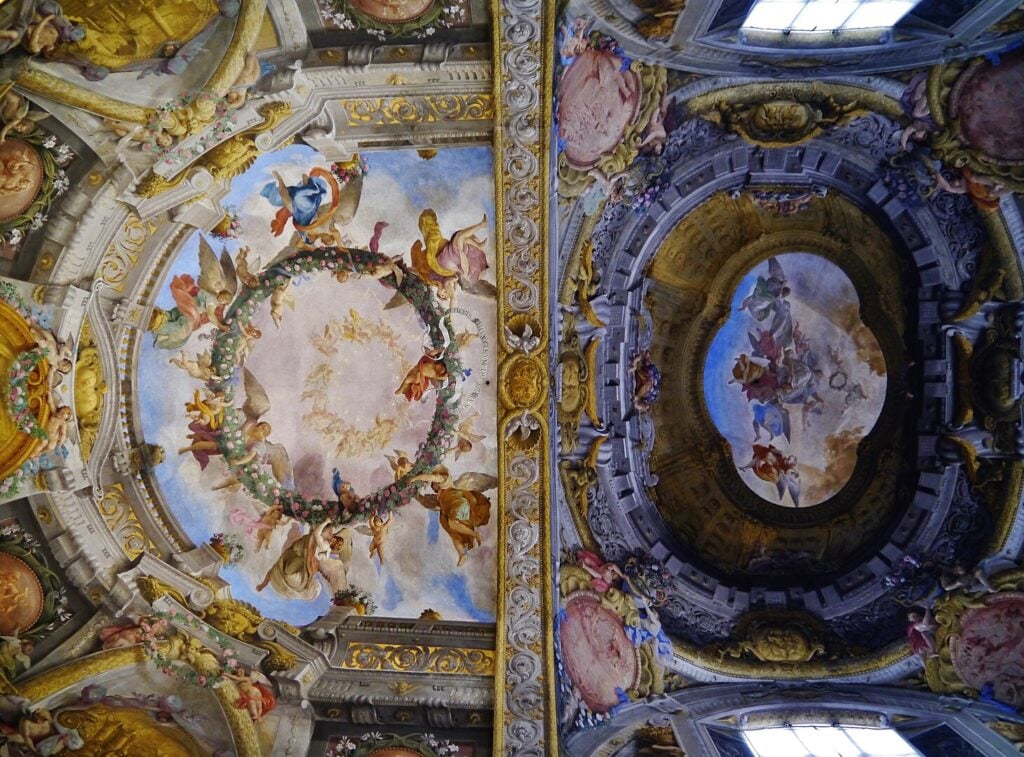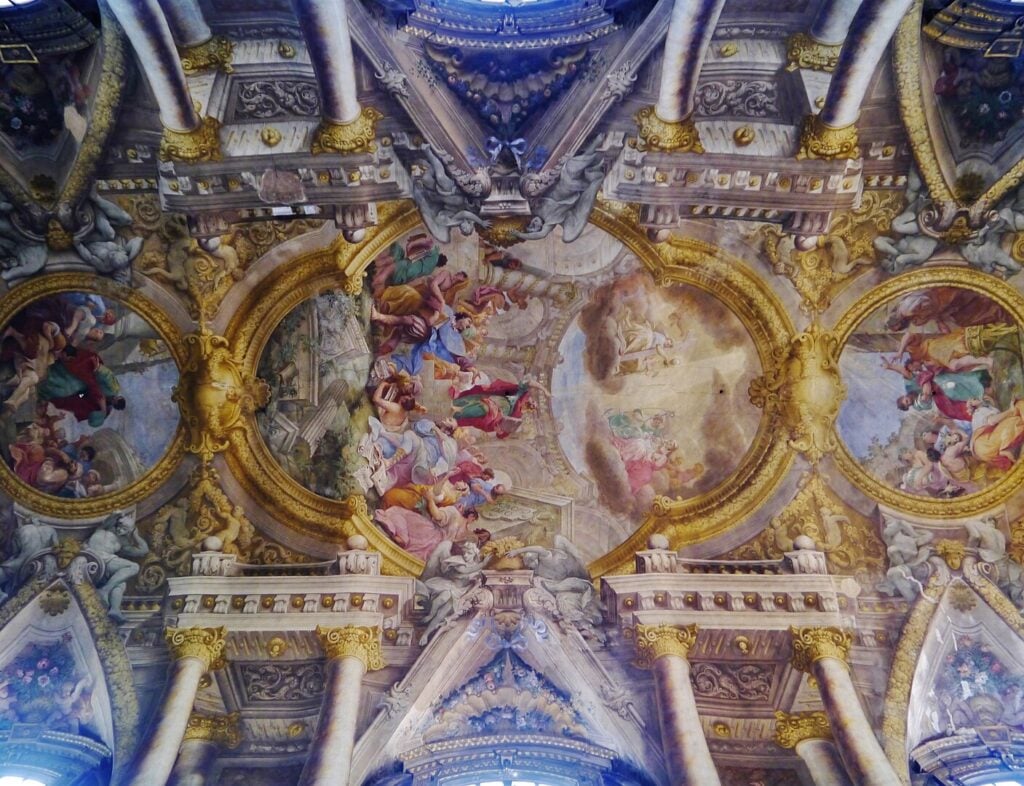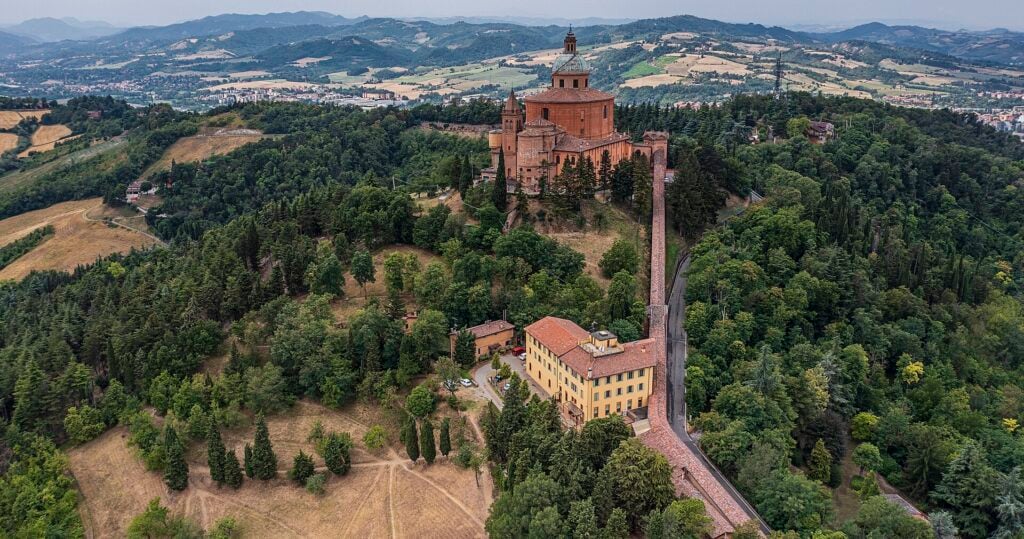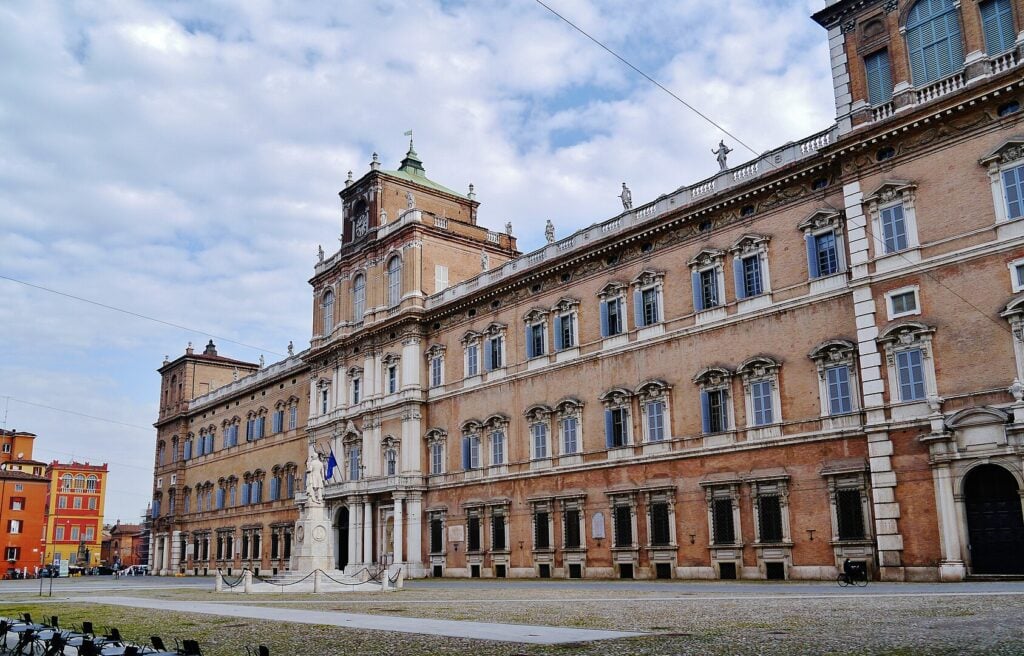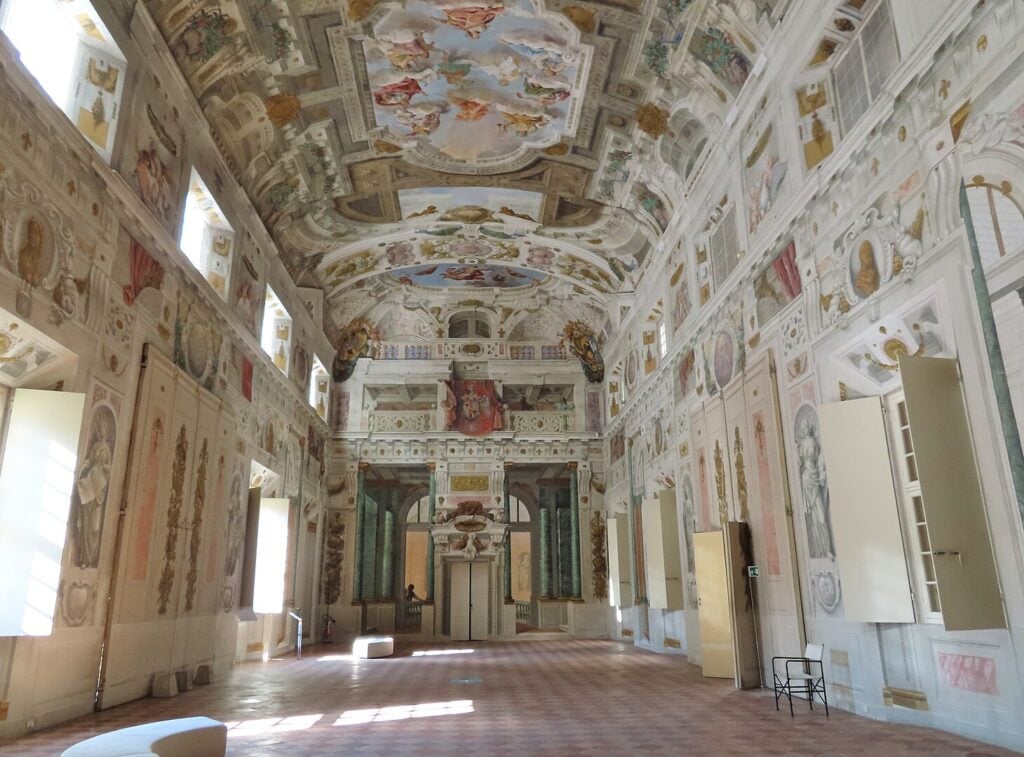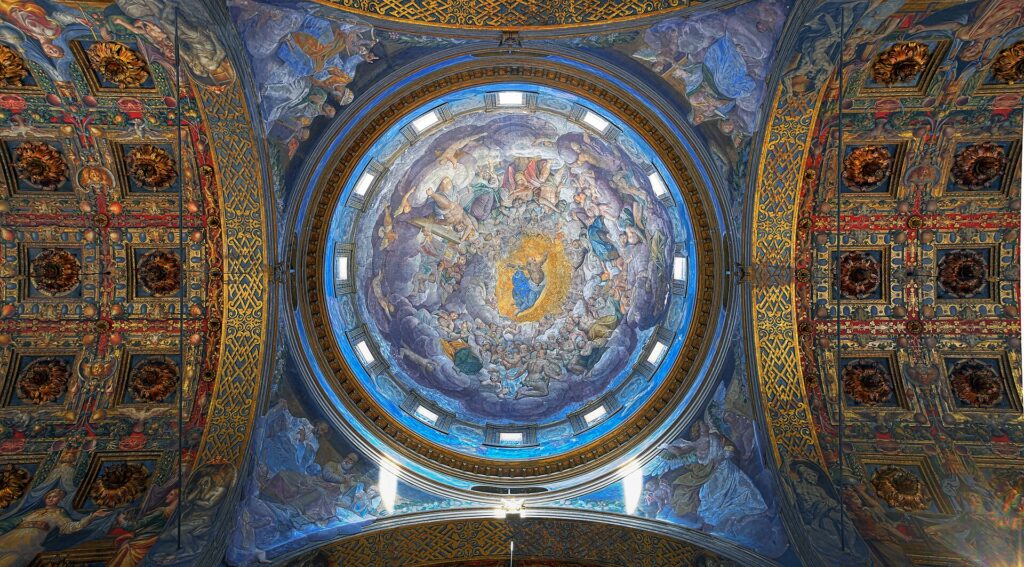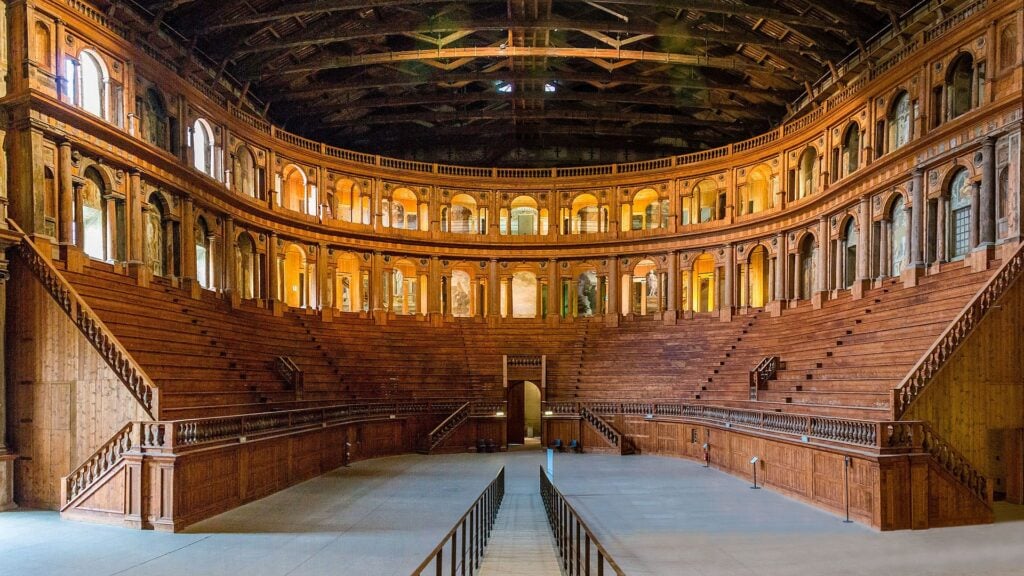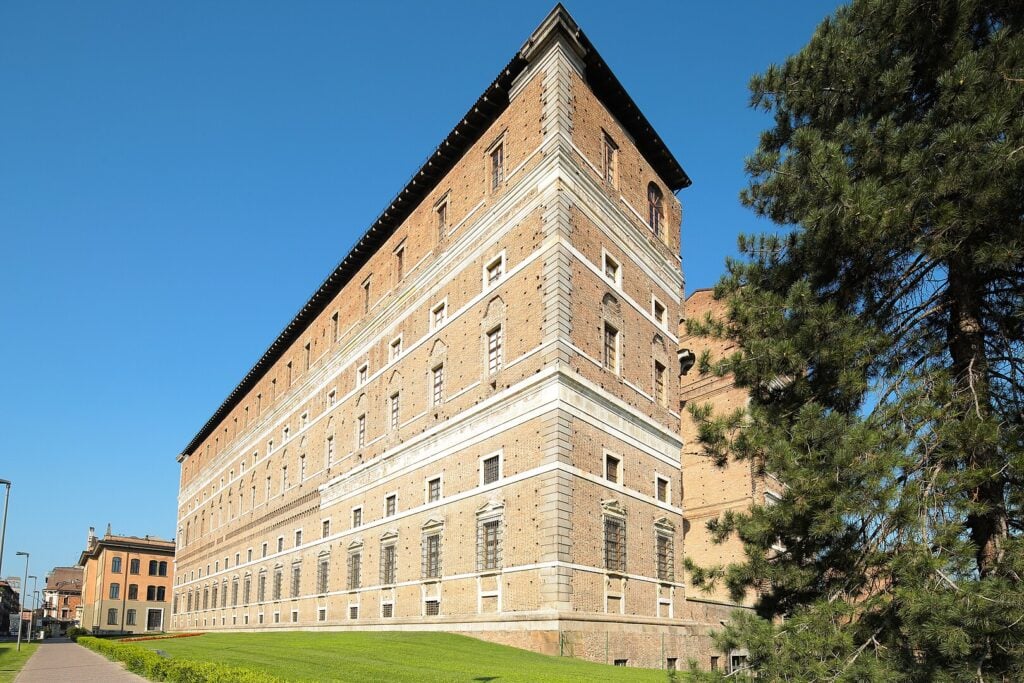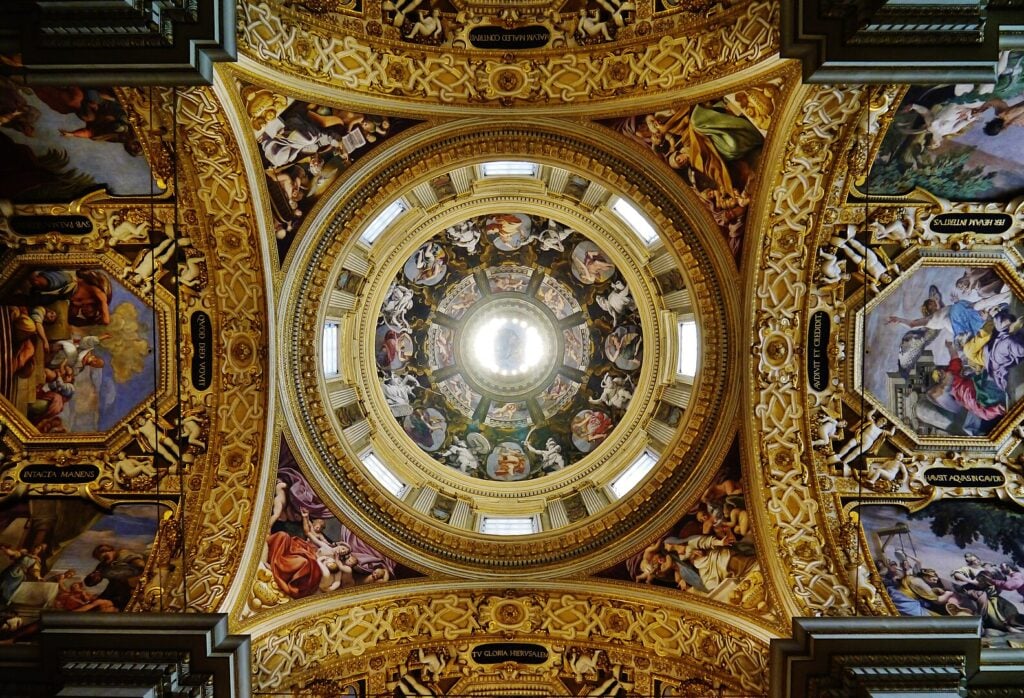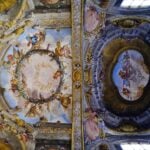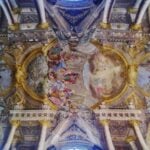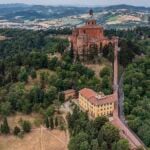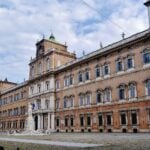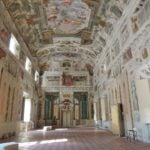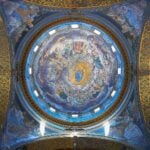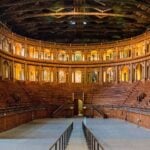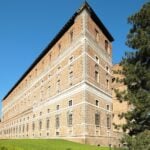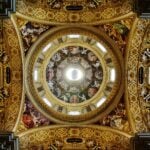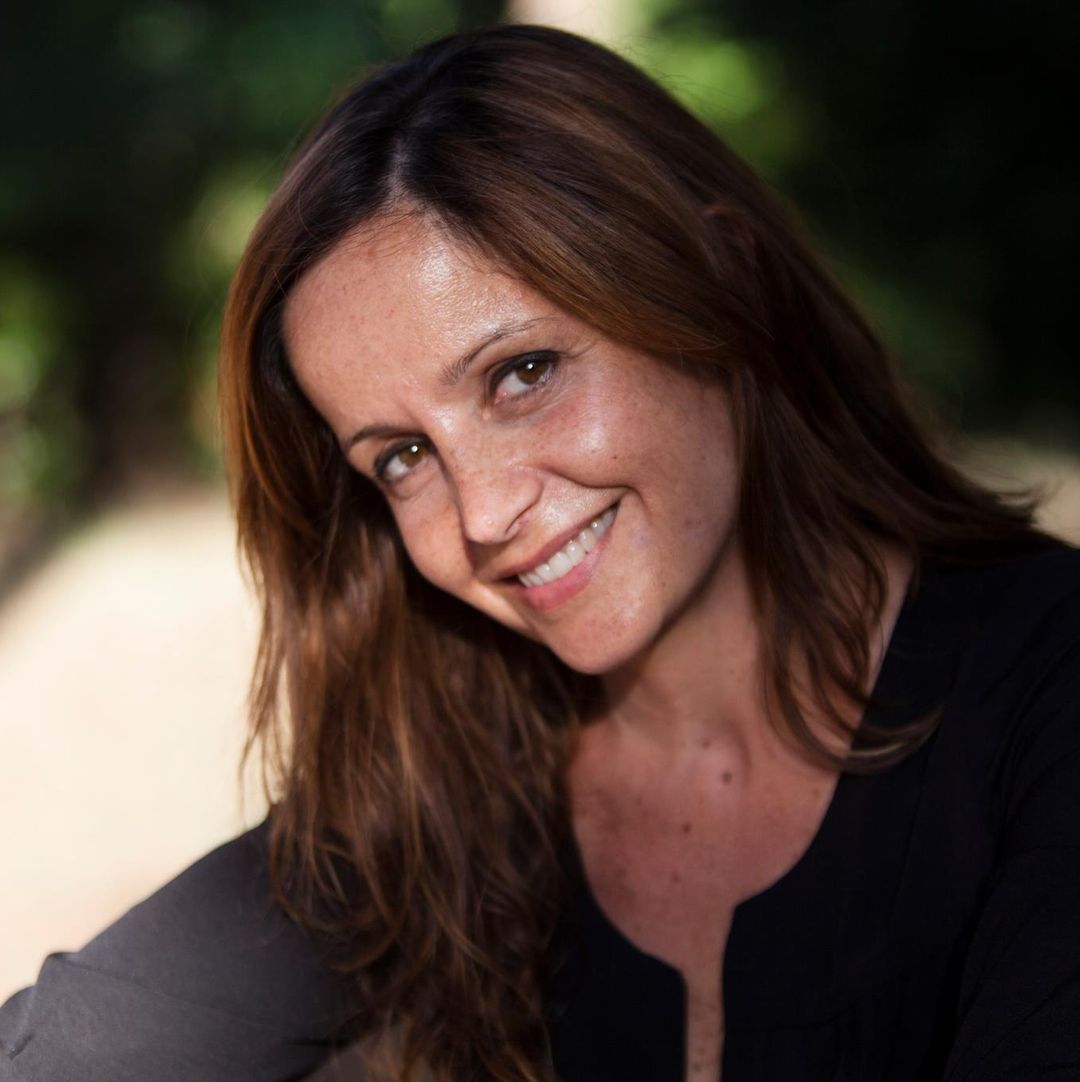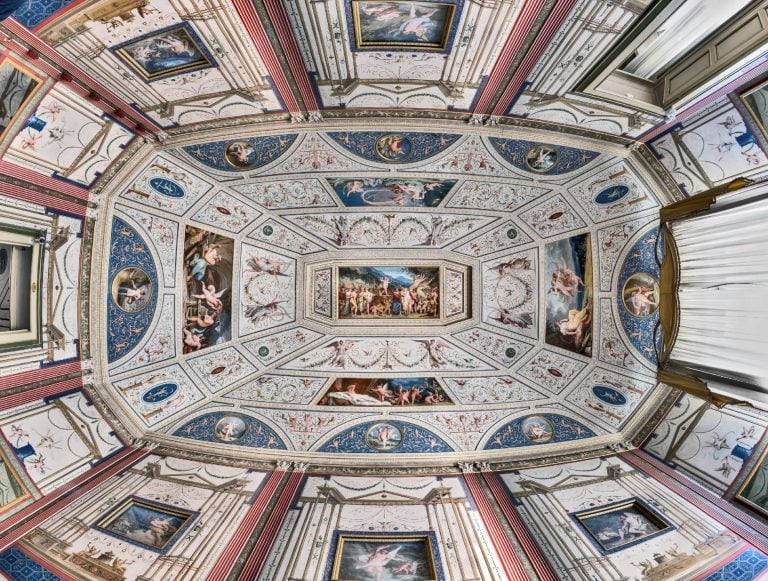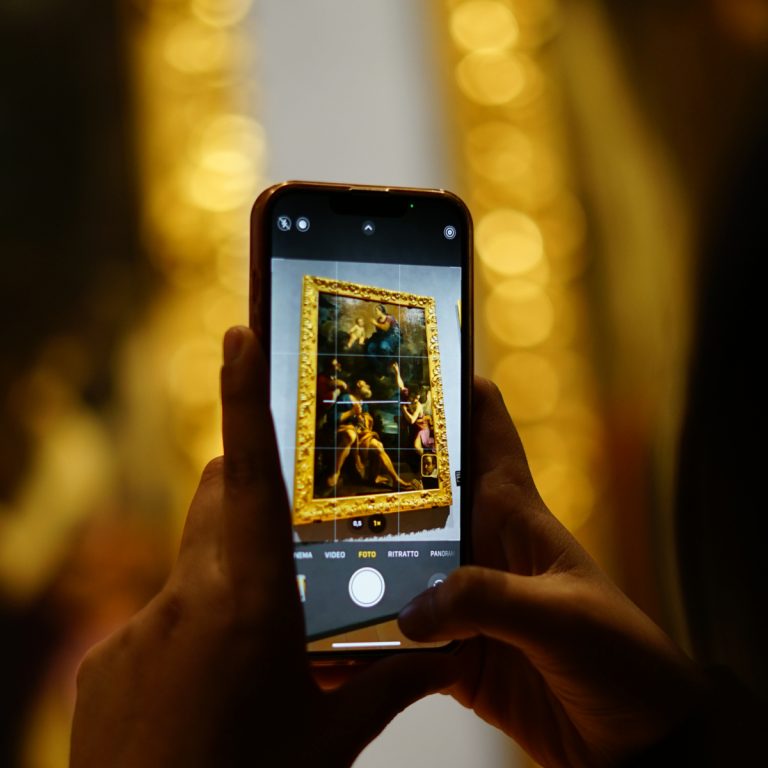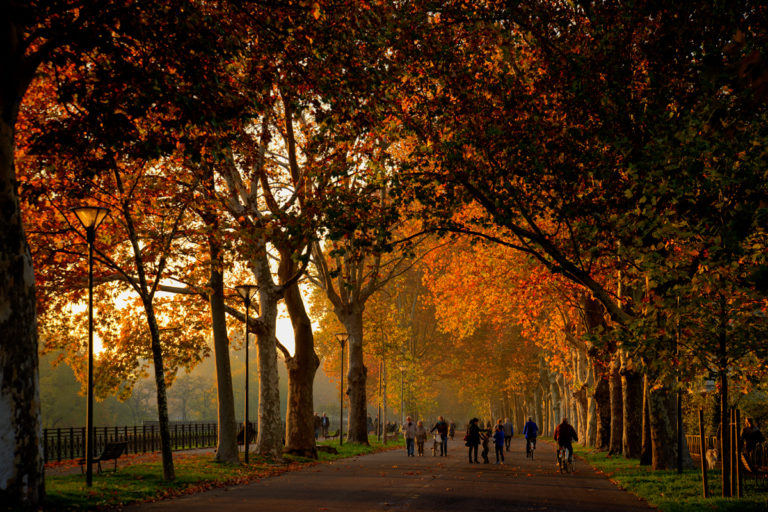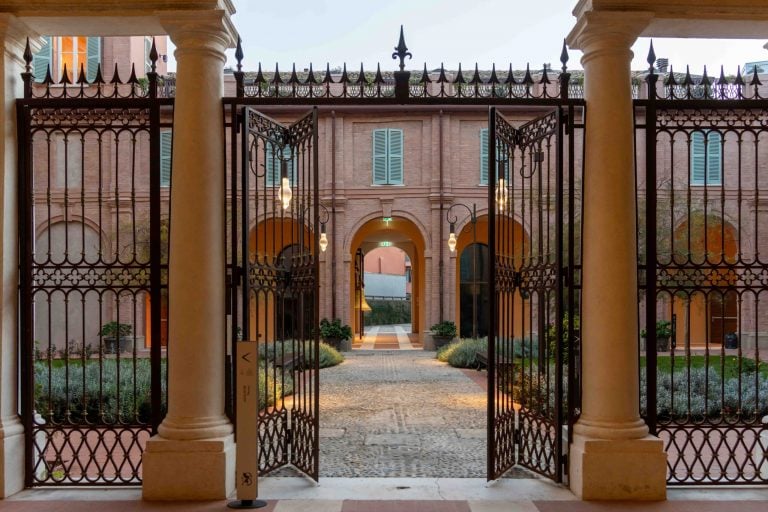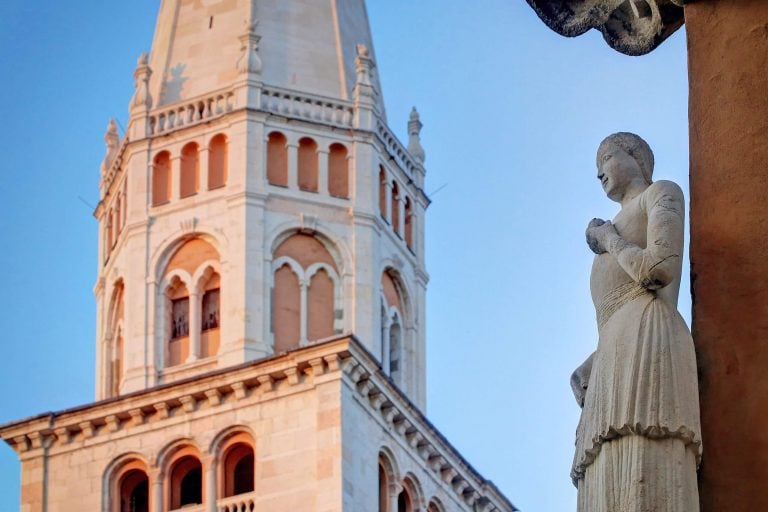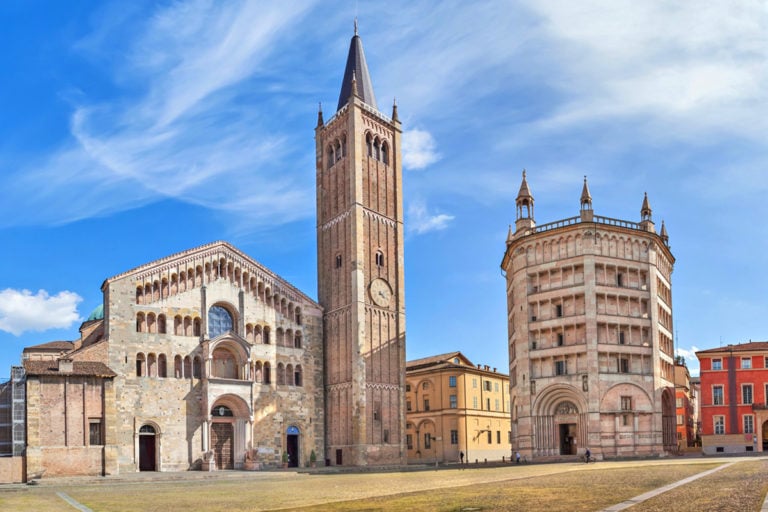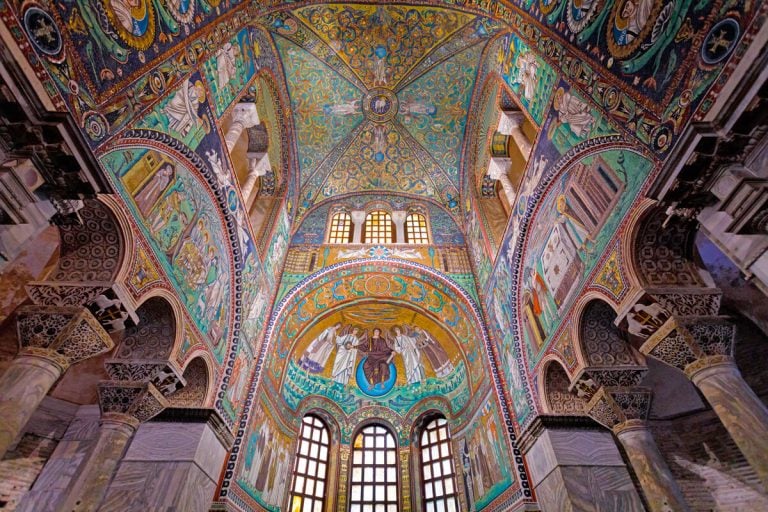The Baroque era left behind a fascinating legacy in Emilia-Romagna, including spectacular churches, ornate oratories and palaces that reflect the tastes and spirituality of the 17^(th) century.
Each city interpreted the Baroque style differently, blending faith, art, and a desire to astonish.
Travelling along the Via Emilia to discover the Baroque art of Emilia-Romagna’s cities allows you to admire a rich heritage of masterpieces and evocative atmospheres where beauty and emotion converge.
Bologna, Basilica di San Domenico, Cappella del Rosario Ph. Zairon via wiki
Bologna, Basilica di San Paolo Maggiore, Interno Ph. Zairon via wiki
Bologna, Portico e Basilica di San Luca Ph. Maurizio Moro5153 via wiki
Modena, Palazzo Ducale, Facciata Ph. Zairon via wiki
Sassuolo, Palazzo Ducale, Salone delle Guardie Ph. Parma1983 via wiki
Parma, Basilica della Steccata, Cupola con l'Assunzione di Maria Ph. Livioandronico2013 via wiki
Parma, Teatro Farnese Ph. www.bestofcinqueterre.com via wiki
Piacenza, Palazzo Farnese Ph. Marcotrabacchi via wiki
Reggio Emilia, Basilica di Santa Maria della Ghiara, Cupola Centrale Ph. Zairon via wiki
Baroque in Bologna and Modena
Bologna is the city where Baroque art perhaps finds its most complete expression.
The seventeenth-century churches, palaces and oratories tell the story of an era of intense creativity and spirituality.
The Basilica of San Paolo Maggiore, construction of which began in 1606, provides an ideal starting point, with its interior housing frescoes by Ludovico Carracci, Guercino, Lucio Massari and Cavedone which come together to create a harmonious and vibrant whole. Nearby, the Oratory of San Filippo Neri captivates visitors with its elegant architecture and frescoes by Giovanni Battista Caccioli.
The historic centre also features the Basilica of Saints Bartolomeo and Gaetano, whose naves are adorned with works by Ludovico Carracci, Ubaldo Gandolfi and Francesco Albani, as well as the Oratory of San Giovanni Battista dei Fiorentini, which boasts gilded stucco and precious decorations.
The Church of San Domenico, home to the spectacular Chapel of the Rosary, and the Palazzo Davia Bargellini, a prime example of civil Baroque architecture featuring works by Algardi, the Carracci, Guercino and Guido Reni, complete the journey through faith and beauty.
Outside the city center, the San Luca Sanctuary with its long portico perfectly integrated into the hilly landscape and the Meloncello Arch, designed by Carlo Francesco Dotti, offers one of the most iconic images of Bolognese Baroque.
Art lovers should not miss a visit to the Bologna National Gallery, which houses an important collection of Baroque works documenting the activity of the Accademia degli Incamminati, founded by the Carracci family, and great masters such as Guido Reni, Guercino, and Domenichino.
In Modena and the surrounding area, the Baroque style is evident in the ducal palaces commissioned by the Este family.
The Ducal Palace of Modena, with its monumental staircase and rooms adorned with frescoes by Marcantonio Franceschini, is a masterpiece of elegance and power.
A few kilometres away, the Ducal Palace in Sassuolo combines the refinement of the Este residences with a fairytale atmosphere. It features fountains, gardens and frescoes by artists such as the Frenchman Jean Boulanger.
The Gallerie Estensi in Modena boasts a collection of Baroque paintings illustrating the artistic wealth of the period, including works by Guido Reni, Guercino, Carlo Cignani and Elisabetta Sirani.
Baroque in Emilia
In Piacenza, the magnificence of the 17th century is reflected in the Palazzo Farnese, which houses the famous Fasti Farnesiani and the Duchess’s gilded apartment, as well as the 17th-century San Cristoforo Oratory. But the true symbol of Piacenza’s Baroque style is the dome of the Duomo, frescoed by Guercino: a breathtaking vision of light and movement.
In Parma, Baroque meets the stage: the Farnese Theatre, made entirely of wood, is one of the most beautiful historic theaters in Europe and perfectly represents the union between architecture and entertainment.
Also in Parma, the Basilica della Steccata preserves decorations and frescoes in full harmony with 17th-century sensibilities.
In Reggio Emilia, the Baroque period left its mark on the Basilica della Ghiara, with its bright and richly decorated interior, and on the Basilica of San Prospero, where faith is expressed in theatrical and engaging ways.
Baroque in Romagna
Romagna also preserves a rich Baroque heritage, where spirituality and art converge to create delicate and captivating settings.
In Ferrara, the Baroque style is more subdued yet still elegant; the interior of the Cathedral of San Giorgio reveals a restrained, refined taste.
In nearbyCento, Guercino’s birthplace, the Pinacoteca Civica boasts the largest collection of his works, celebrating the artist who best captured the essence of the Emilia-Romagna Baroque.
In Ravenna, the Cathedral and the Basilica of Santa Maria in Porto were renovated between the 17th and 18th centuries with bright interiors and stucco decorations.
In Faenza, the Cathedral of San Pietro Apostolo and the Church of Santa Maria ad Nives are examples of a more intimate Baroque style, but still rich in decorative details.
In Forlì, the Church of Suffragio, overlooking Piazza Saffi, impresses with its dynamic façade and interiors rich in stucco and marble. Not far away, the Church of San Filippo Neri reflects the religious fervor and elegance of the 17th century.
In Cesena, the Church of San Domenico and the Cathedral of San Giovanni Battista preserve Baroque chapels and altars that bear witness to the spread of the style in the city.
Finally, in Rimini, the Church of Sant’Agostino and the Church of San Bernardino preserve chapels and paintings from the period, offering an evocative glimpse of Baroque sacred art on the Adriatic coast.
One more reason
Baroque lovers will have one more reason to visit Emilia-Romagna in 2026: the Museo Civico San Domenico in Forlì is dedicating a major exhibition to this movement, entitled “Baroque. The grand theater of ideas” (February 21 – June 28, 2026), a journey through 200 paintings that winds its way through works by masters such as Diego Velazquez, Pietro da Cortona, Giovan Battista Gaulli, Salvator Rosa, and Artemisia Gentileschi to more recent artists such as Luciano Fontana, Giorgio De Chirico, and Francis Bacon, who were inspired by this movement. Alongside them are the great exponents of the Emilian-Romagnolo Baroque, such as Guercino, Cagnacci, and Guido Reni.
Author
You may also like
Historical Palaces in Emilia-Romagna to visit at least once in a lifetime
by Elisa Mazzini /// December 6, 2024
7 new exhibition spaces to visit in Emilia-Romagna
by Tatiana Tomasetta /// April 23, 2024
Autumn Break in Italy: the art cities of Emilia-Romagna
by Davide Marino /// October 18, 2019

Interested in our newsletter?
Every first of the month, an email (in Italian) with selected contents and upcoming events.
Ravenna and the new Byron Museum: a journey through history and poetry
by Davide Marino /// November 27, 2024
Statue and Urban Sculptures in Emilia-Romagna
by Davide Marino /// July 30, 2024
The most beautiful churches and cathedrals in Emilia-Romagna
by Davide Marino /// September 20, 2018
